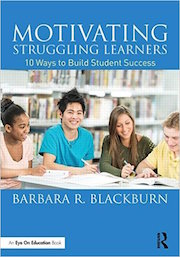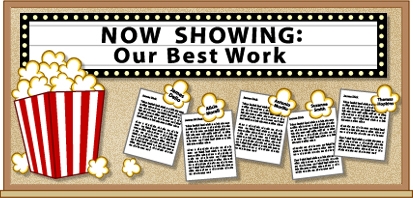Modeling: What Students See Is What They Get
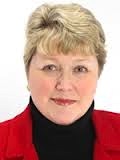
By Dr. Barbara Blackburn
Advertisers spend many billions per year marketing specifically to kids. They know that kids, like everyone else, are influenced by what they see. This is also true in your classroom, where students are particularly influenced by three things they observe:
- You as the teacher
- The physical environment
- Other role models
1. The Teacher as Personal Model

You are the most important image your students see every day at school. They notice what you wear, what you do, what you read, and whether you are sick or feeling well.
I’m not talking about whether or not you have a quiet or bubbly personality; I’m saying they notice whether you smile when you see them, or if you look upset every time they ask a question.
Teacher Erin Owens told me: “Each day, no matter what I am going through personally or professionally, I try to display as much enthusiasm as possible. How do you expect students to embrace learning and become lifelong learners if you do not? Many times, my actions and attitude toward academics impact my students more than discussions.”
Every one of your students watches and learns from you. The question is, what do they learn?
One of my graduate students hit an unexpected obstacle with an assigned project for my class. To implement an interdisciplinary unit the other teachers on his teaching team needed to cooperate. His motivation was higher because he would receive a grade for the project.
He reluctantly told me that to get everyone to participate he had to do his unit on the theme of Cinderella. As a math teacher, and frankly as a male, this would have been about his last choice for a teaching unit. But he was stuck with it. When he finished the unit, he shared a story about his experience.
Several of his students who were also on his football team told him they had learned a lot in the unit, but they mostly learned that sometimes you have to do things you don’t want to do.
They said they knew he didn’t want to teach about Cinderella (he ultimately had the students create a budget for a mock production), but he still made it fun. And that they remembered!
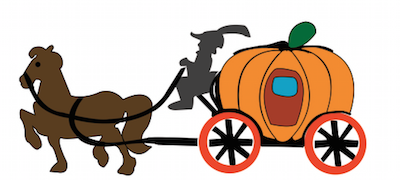
Teachers should be great models of lifelong learning. Do your students see you still learning and growing? Do you tell or show them new things you learned in a workshop or from a book? Do your students ever see you reading?
2. The Physical Environment
What does your room say about your instruction? The look or appearance indicates how your classroom works, both good and bad.
When I was assigned to teach the at-risk classes in my school, I knew I needed to send a message the moment the kids stepped in the room. Unfortunately, it was common knowledge who was assigned to the developmental class because of low test scores.
Most of my students came in with a negative attitude, and I was determined to change that perception. Instead of a dumping ground (the typical view of the low-level classes), I wanted them to see an exciting and fun class that was attractive to all students.
I took the entire back wall, I put up three bulletin board backdrops with bright borders, such as blue and yellow, and I added catchy headings, such as Spotlight on…. These were empty until the year started, then they were continually filled with student work that I rotated regularly.
I wanted to send two messages to my students. First, it’s a new year and we all start with a blank slate. Second, in this class it’s all about your learning.
I’ve been in several classrooms lately where teachers put a volleyball net up across the back of the room, so they could use clothespins to post sample work products. That’s an easy way to frequently change the postings.
3. Other Role Models
The final area of appearance is that of role models. Erin Owens explains that in her elementary classroom, she will bring many different people from the community into the room: Junior Achievement executives, high school helpers, local university interns, district office employees to read, professors dressed as Abe Lincoln, and other volunteers.
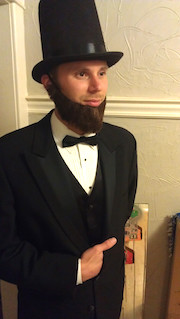
You probably have people come into your classroom, too, and I’m sure you think about the kind of role models they are. But there are also less obvious ways we send students messages about who or what they can be.
One of these subtle ways of communicating role expectations is through the images students see in their reading. When I worked for a textbook company, we were required by one school district in Florida to provide a grid that listed every selection in the reading book. In the chart we had to list whether the main character was a male or female, the ethnicity of all characters, and whether there was a character with special needs.
At first I thought it was a tedious request, but I quickly saw the value. Too often our instructional materials don’t speak to particular groups of your students. Textbooks and other books are more inclusive than in the past, but it is still difficult to find the balance we might like.
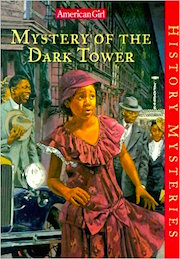
After two weeks, she finally found a historical novel about a friendship between two girls. As she described it to me, she wanted her students to read historical fiction, but she didn’t want them to think that all African Americans were slaves. “It’s a part of history, but only a part.”
It’s so important to pay attention to who your students read about or research. In another case I heard a student ask, “Are all scientists boys? Does that mean I can’t be a scientist?” The teacher was quick to say no and found several examples to share with the young girl.
As you build your classroom library, find books that are reflective of your students’ interests, but that also include positive role models. If your students like basketball and are always talking about the National Basketball Association (NBA), find biographies for players who are true role models, both on and off the court. (Grant Hill is one of my favorites.)
Be intentional about research. If your school has a character education program, you can easily link lessons to that curriculum, but if not you can choose the people you talk about and read about in your classroom.
Providing a range of role models throughout your content requires an investment of your time and energy, but the benefits are substantial. For some of your students, the best role models in their lives are those they encounter in your classroom.
Including you!
_____________
